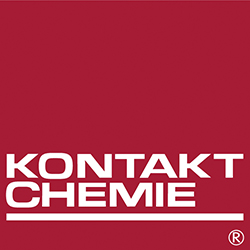82009, Novolack, O-Naphto-Chinon-Diazide Etching Chemical for Etching in Liquid
- RS Stock No.:
- 173-886
- Mfr. Part No.:
- 82009
- Brand:
- Kontakt Chemie

Subtotal (1 unit)*
£19.11
(exc. VAT)
£22.93
(inc. VAT)
FREE delivery for orders over £50.00
In Stock
- 6 unit(s) ready to ship
Need more? Click ‘Check delivery dates’ to find extra stock and lead times.
Units | Per unit |
|---|---|
| 1 + | £19.11 |
*price indicative
- RS Stock No.:
- 173-886
- Mfr. Part No.:
- 82009
- Brand:
- Kontakt Chemie
Specifications
Technical Reference
Legislation and Compliance
Product Details
Find similar products by selecting one or more attributes.
Select all | Attribute | Value |
|---|---|---|
| Brand | Kontakt Chemie | |
| Process Type | Etching | |
| Material | Novolack, O-Naphto-Chinon-Diazide | |
| Ferric Chloride Form | Liquid | |
| Trade Name | POSITIV 20 | |
| Select all | ||
|---|---|---|
Brand Kontakt Chemie | ||
Process Type Etching | ||
Material Novolack, O-Naphto-Chinon-Diazide | ||
Ferric Chloride Form Liquid | ||
Trade Name POSITIV 20 | ||
- COO (Country of Origin):
- BE
CRC Etching Chemical, Liquid Ferric Chloride Form, Novolack - 82009
This etching chemical is a liquid photo-positive resist designed for use in PCB production. Made from a composition of Novolack and O-Naphto-Chinon-Diazide, it effectively transfers patterns onto various substrates. The sensitive formulation allows for high precision in chemical etching processes, ensuring that electrical circuits remain intact after application.
Features & Benefits
• Resists strong acidic etching while allowing easy removal
• Maximum photo-sensitivity in the UV-A wavelength range
• Designed for application in dark or yellow light settings
• Suitable for both metal and glass lithographic projects
• Ensures accurate pattern transfer on circuit boards
• Enables effective etching of copper and brass materials
• Maximum photo-sensitivity in the UV-A wavelength range
• Designed for application in dark or yellow light settings
• Suitable for both metal and glass lithographic projects
• Ensures accurate pattern transfer on circuit boards
• Enables effective etching of copper and brass materials
Applications
• Utilised for printed circuit board production
• Applied in photo-lithographic processes on metals
• Suitable for glass etching
• Used in creating durable inscriptions or graphics
• Applied in photo-lithographic processes on metals
• Suitable for glass etching
• Used in creating durable inscriptions or graphics
How should surfaces be prepared before application?
Surfaces must be cleaned of grease and oxides, ideally using a water-based cleaning process, with final rinses in deionised water to ensure full wettability.
What is the recommended drying process after coating?
Post-coating, boards should be dried in the dark, with temperatures gradually raised to 70°C and maintained for 15 minutes to ensure optimal film quality.
How is the developing process carried out after exposure?
The exposed plate should be immersed in a sodium hydroxide bath for approximately 60 seconds to dissolve the exposed lacquer, followed by thorough rinsing in water.
Related links
- 415-1L, Ferric Chloride Etching Chemical for Etching in Liquid
- 5L-FERRIC, Ferric Chloride Etching Chemical for Etching in Liquid
- ZAK-M22, Etching Chemical for Coating
- DP-10, Silicate Etching Chemical for Developing
- Tin Etching Chemical for Tin Plating in Crystals
- 600-014, Sodium Peroxydisulfate Etching Chemical for Etching in Crystals
- 410-1KG, Ammonium Persulphate Etching Chemical for Etching in Crystals
- AR36, Ferric Chloride Ferric chloride stain remover for Stain Removing in Crystal Powder
